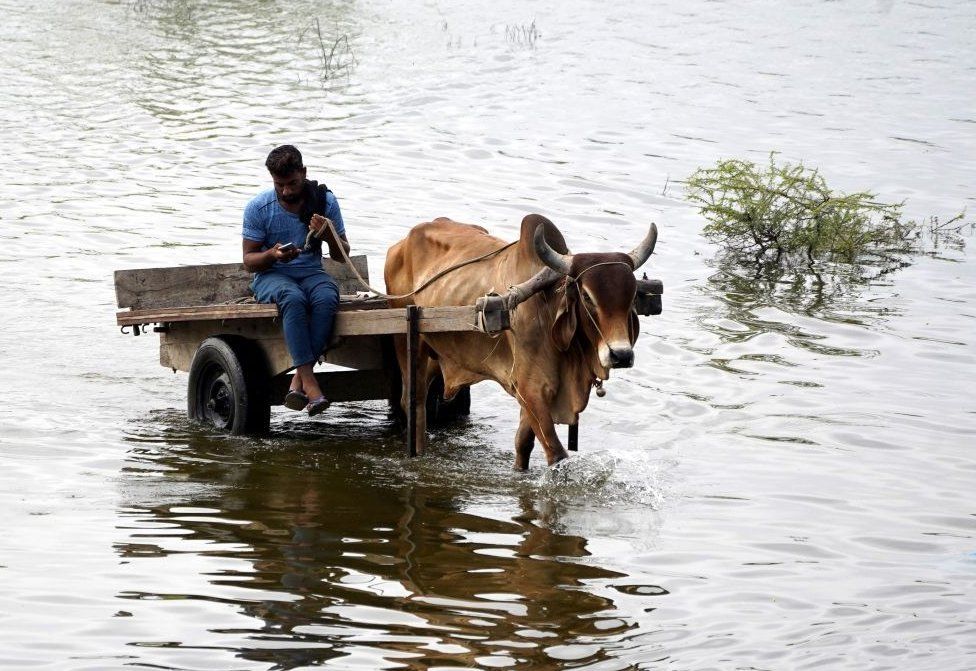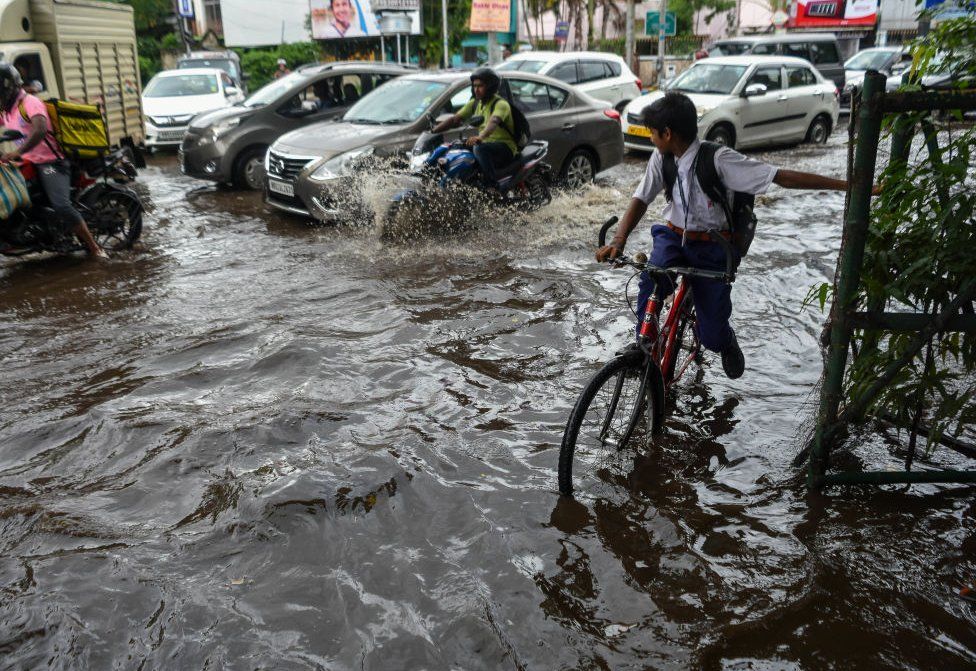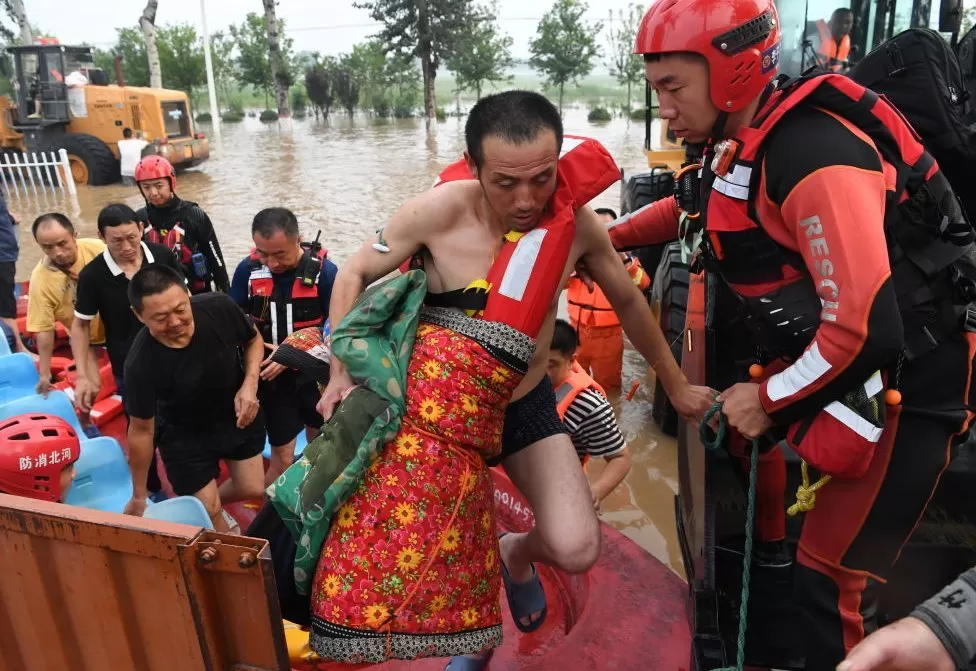Large areas of East Asia have been inundated by storms that brought unusually heavy rain and fierce gusts so early in the north Pacific typhoon season, with China among the worst affected nations.
The quantity of rain that fell during the last week in Beijing alone surpassed a record that had stood for 140 years.
As Doksuri, a previous super typhoon, flooded China’s northeast, residents of Beijing and the nearby province of Hebei fled their houses on inflatable boats and trucks.
Authorities have evacuated millions of people, and at least 10 individuals have perished and 18 are still missing.
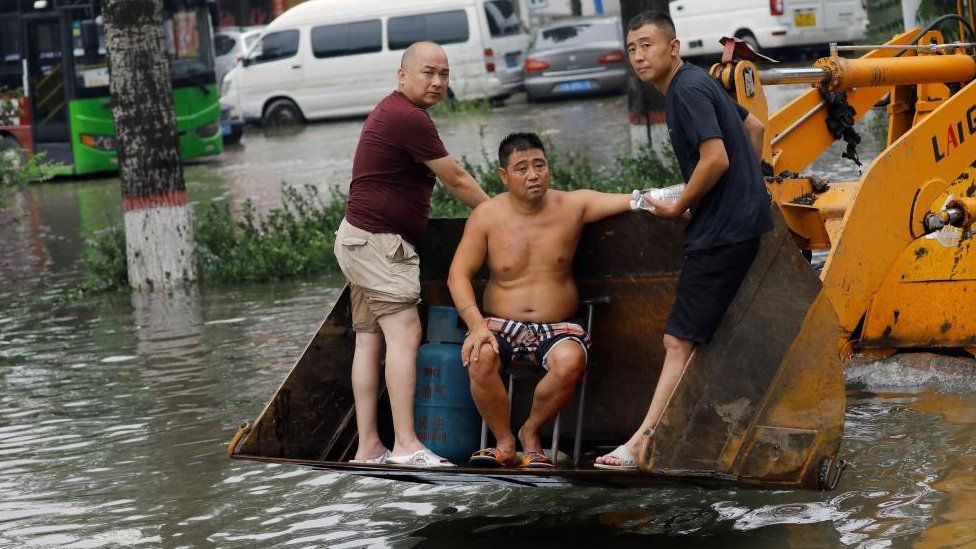
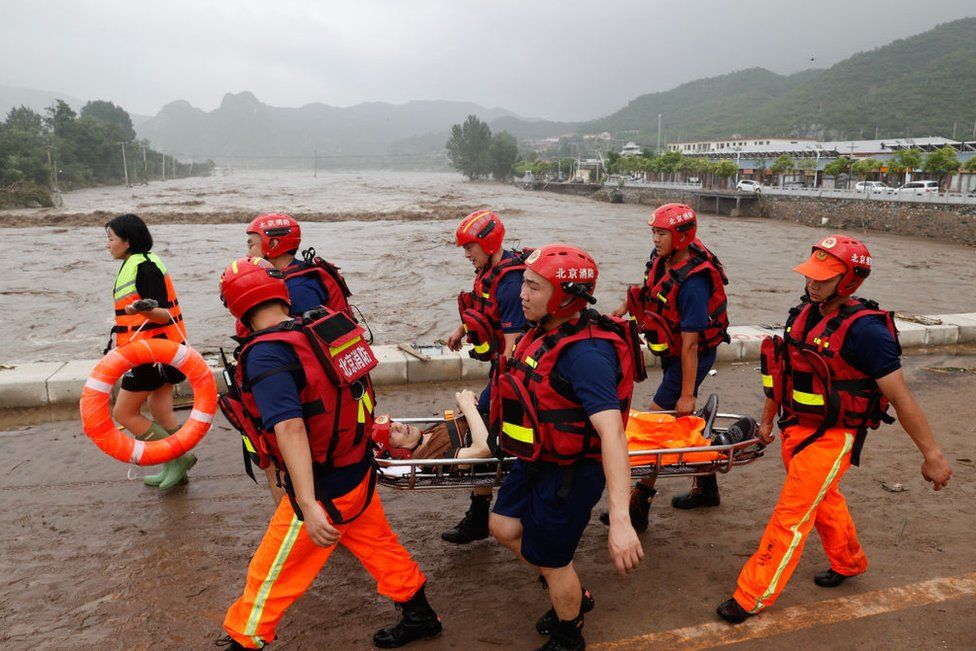
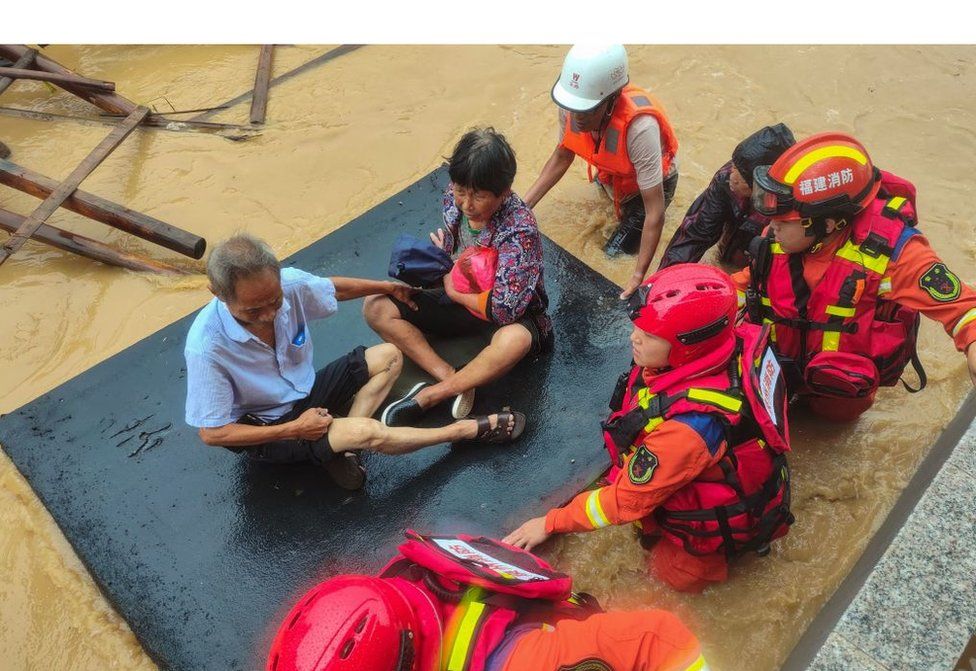
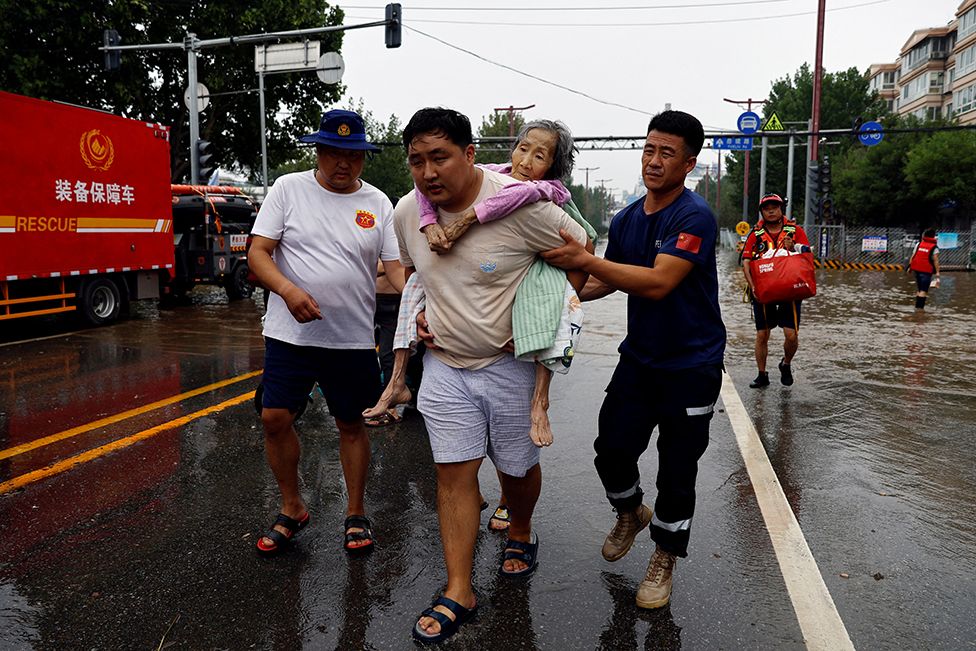

The floods damaged roads and bridges, submerged cars and destroyed construction sites.
Doksuri slammed into China last weekend and drenched the north-east for most of the week. The region had barely recovered from typhoon Talim the week prior.
Then, there’s the threat of typhoon Khanun out at sea off China’s east coast, which threatens to intensify rains in areas hit by Doksuri.
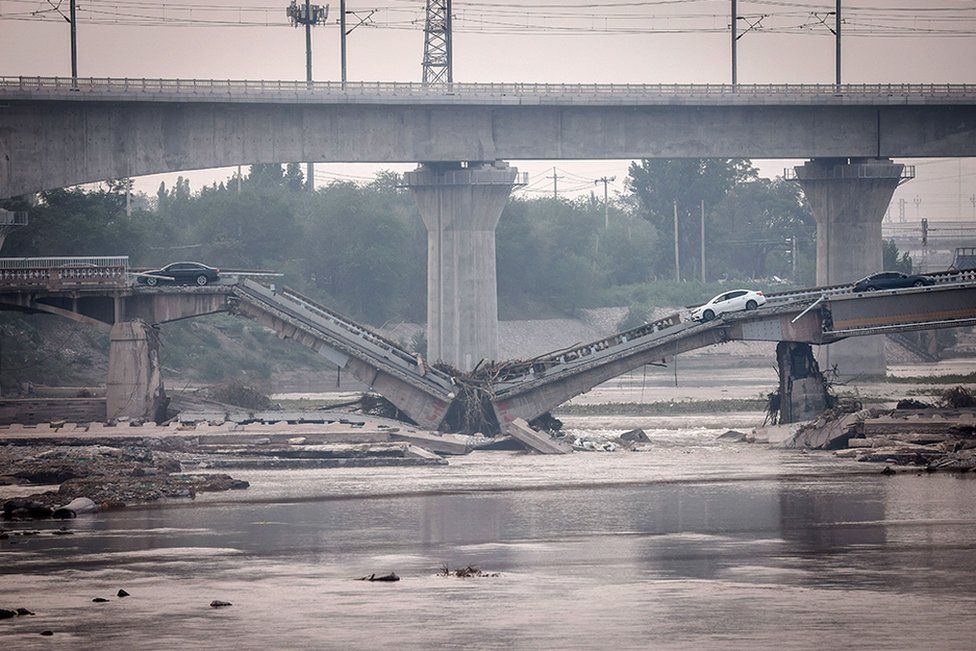

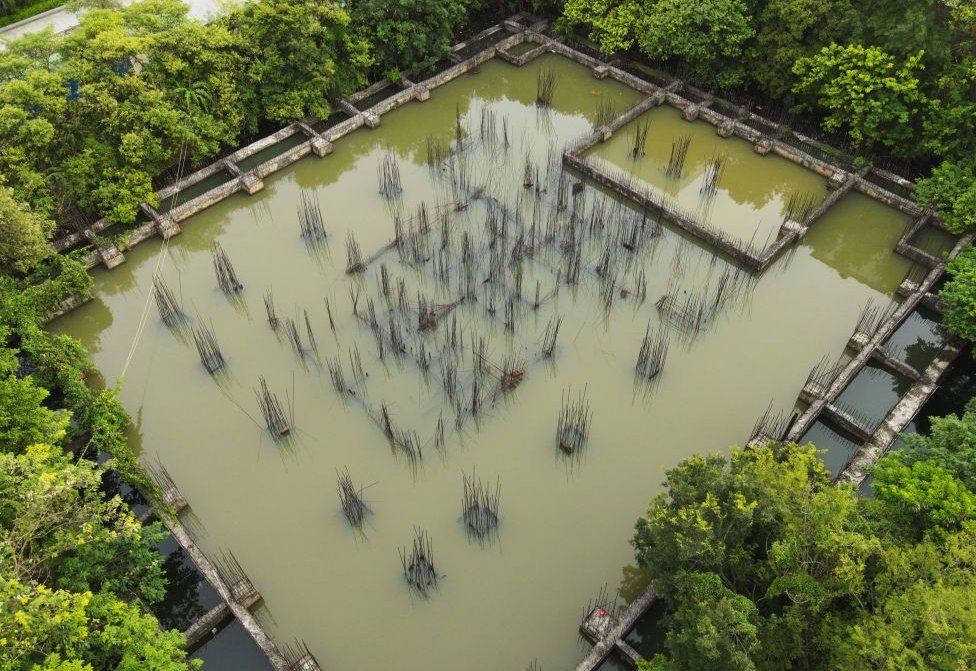
In areas where the floods have subsided, residents have started shovelling mud out of their homes. The following three photos were also taken in Beijing.
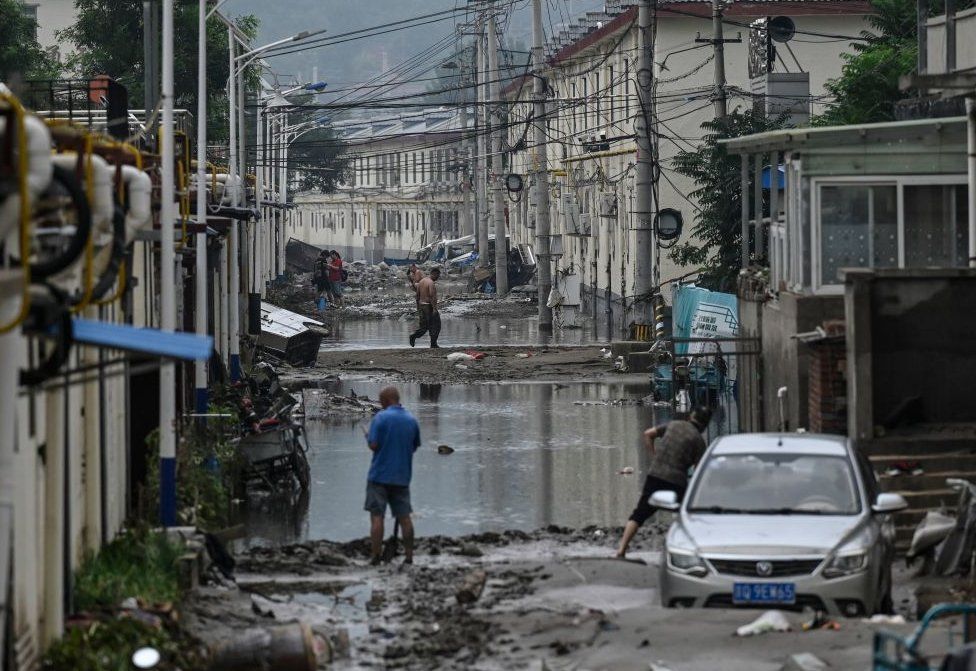
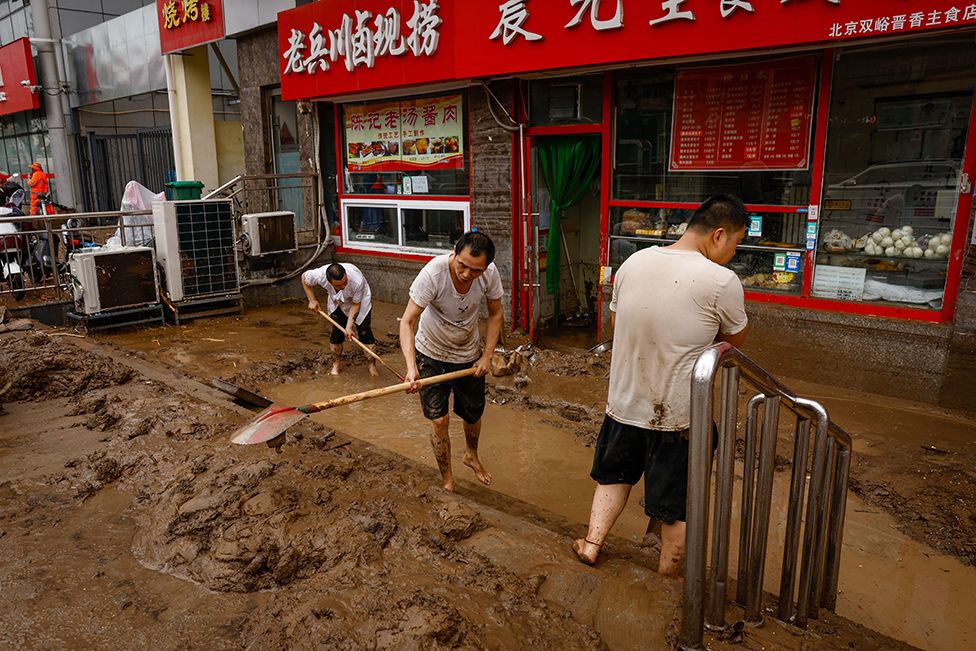
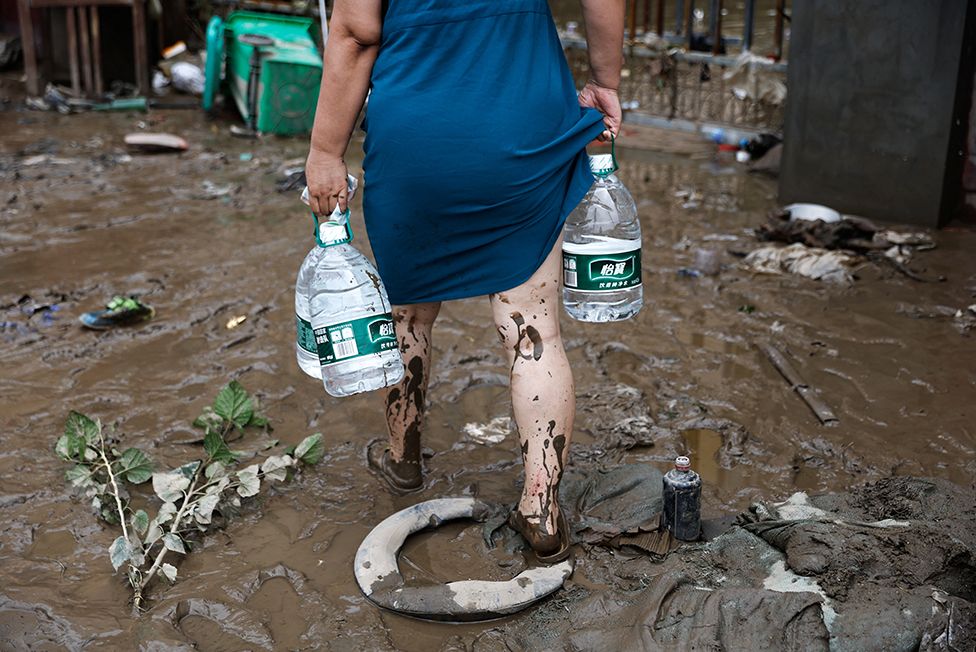
The waterlogged scenes also played out in the Philippines, where Khanun, Doksuri and Talim exacerbated seasonal monsoon rains.
While storm-weary Filipinos went about with as much of their daily routines as they could, the typhoons highlighted perennial problems of flooding in the capital, Manila, and its suburbs of Bulacan and Pampanga.
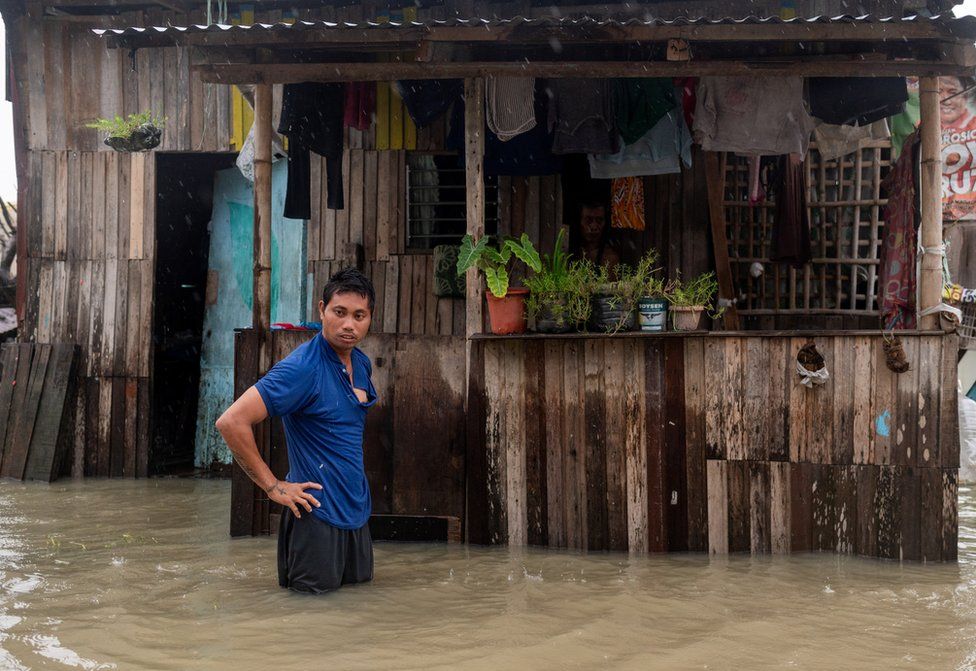
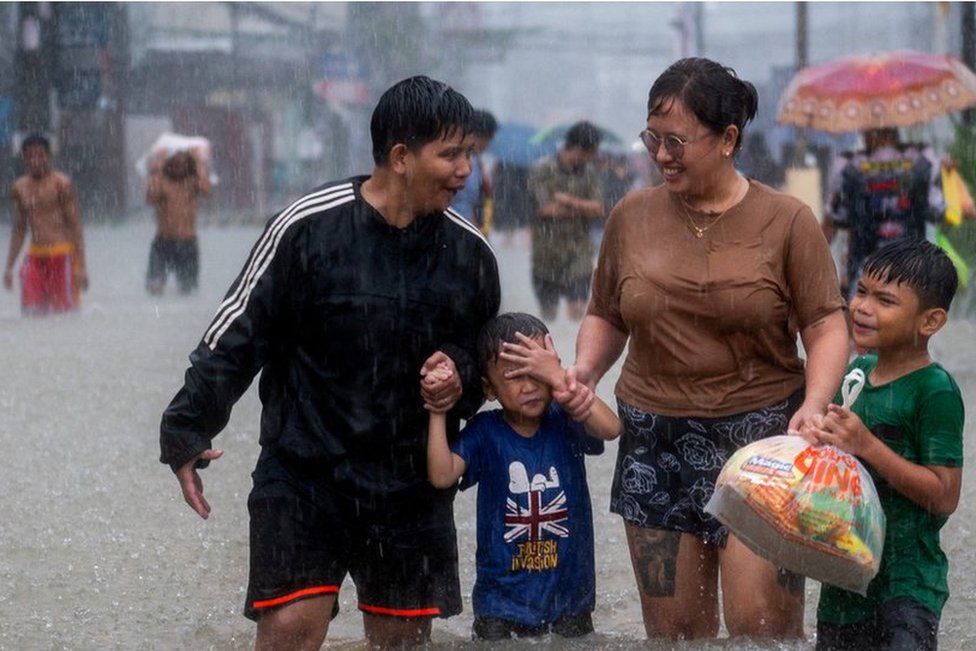
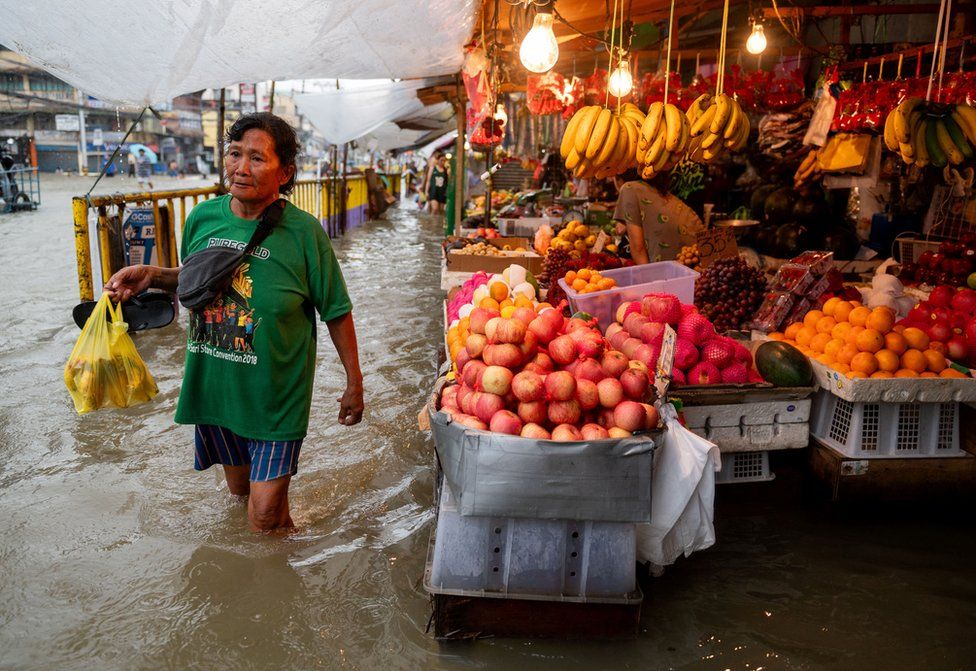
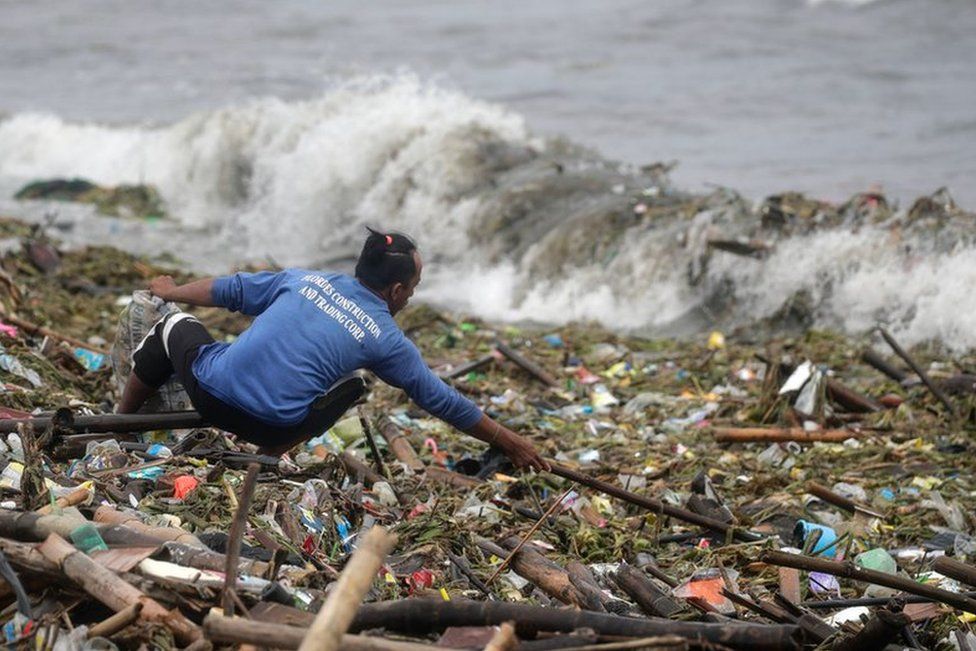
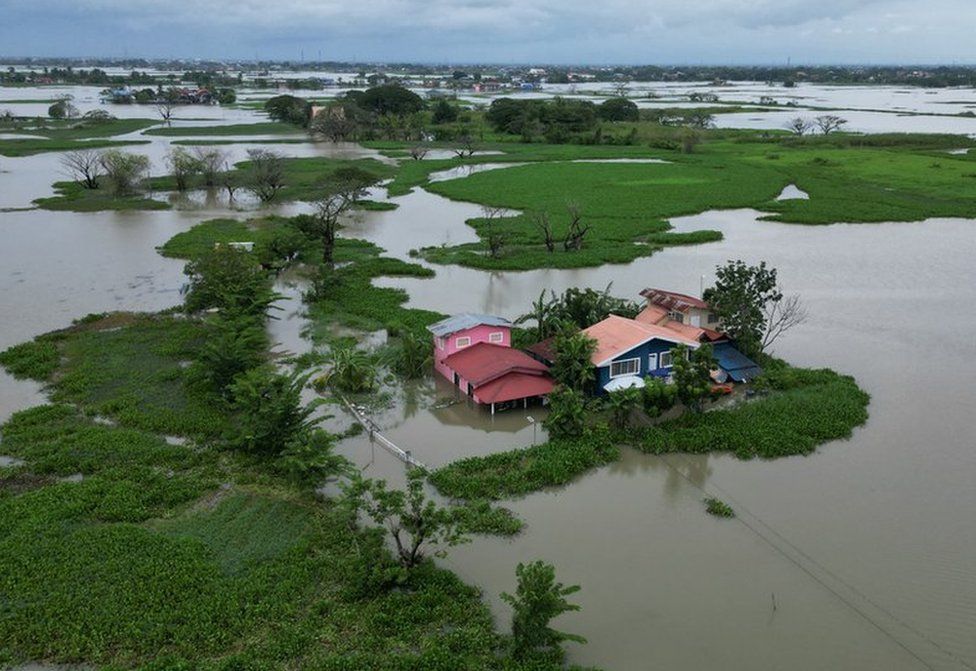
Slow-moving Khanun lashed Okinawa in the middle of the week and threatens to curve back to mainland Japan while intensifying rains in China.
It cut power to one-third of Okinawa in its wake and shut the airport for a day during peak tourism season.
Typhoon Khanun led to offices and schools being shut for a day in Taiwan.
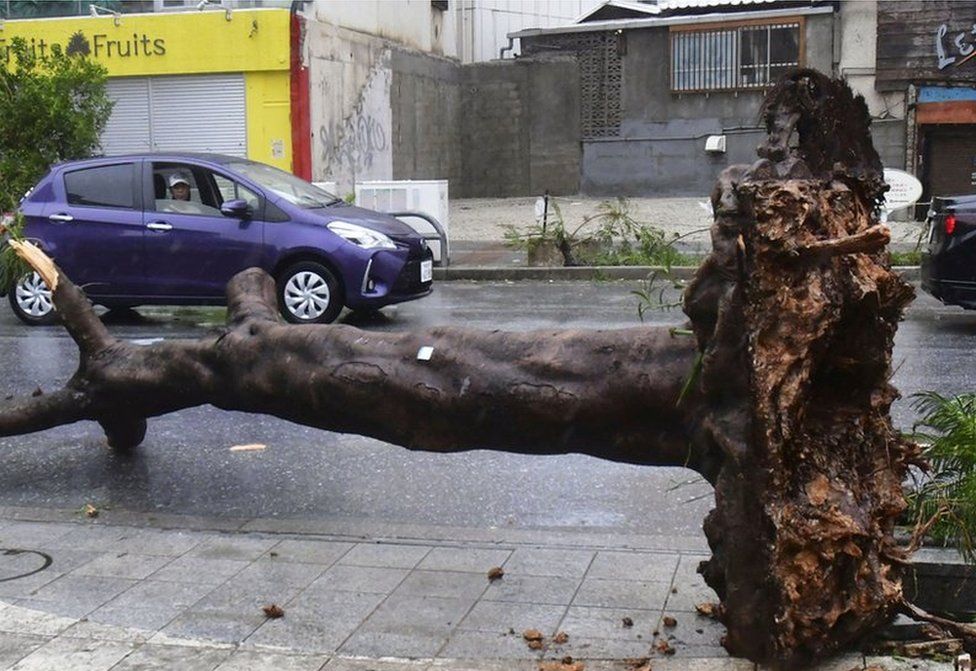
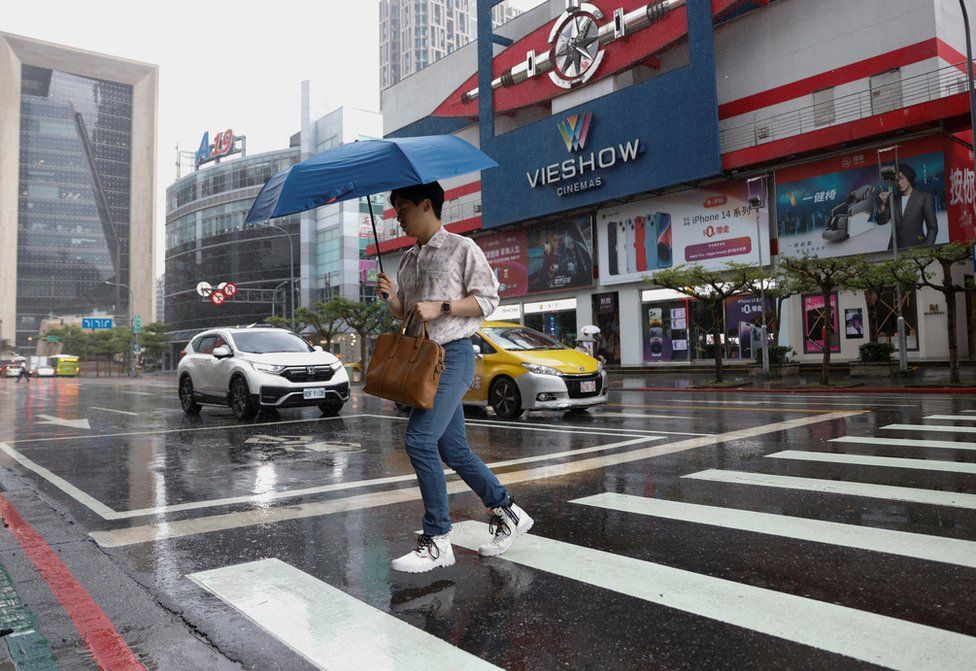
Meanwhile, India is in the middle of a heavy monsoon season that has waterlogged parts of the country.
In the first two weeks of July alone, floods and landslides there have killed almost 100 people in the north.
